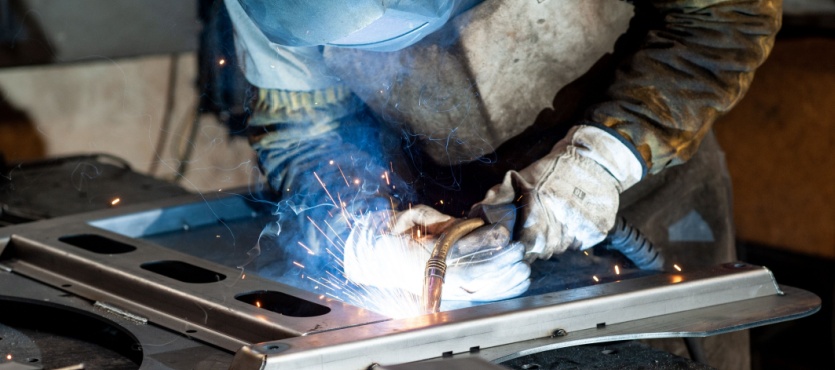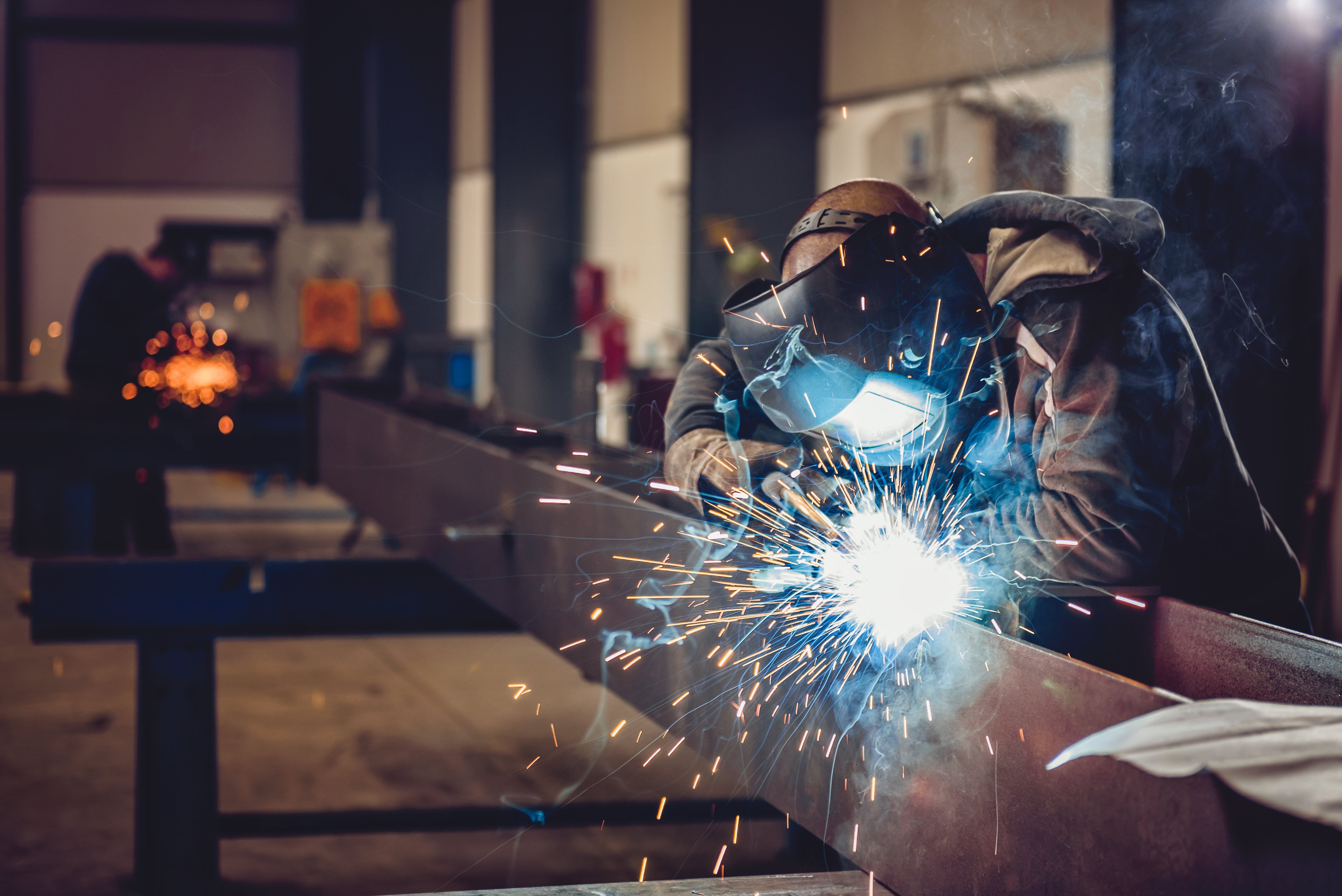Everything about Welding: Secret Insights Into Techniques and Ideal Practices for Success
Welding encompasses a range of methods, each fit for certain products and applications. Recognizing these approaches, such as GMAW, SMAW, and TIG, is important for accomplishing perfect outcomes. Moreover, the appropriate devices and safety and security techniques can not be overlooked. As prep work and troubleshooting play essential duties in the welding process, understanding these aspects can considerably improve the top quality of the end product. What are the essential elements that guarantee an effective weld?
Recognizing Various Welding Strategies
Welding strategies incorporate a selection of approaches, each fit to specific applications and products. Among one of the most typical methods are Gas Metal Arc Welding (GMAW), Shielded Steel Arc Welding (SMAW), and Tungsten Inert Gas Welding (TIG) GMAW, also known as MIG welding, is preferred for its speed and convenience, making it suitable for thin materials. SMAW, or stick welding, is preferred for its simplicity and efficiency in outdoor atmospheres, particularly with thicker steels. TIG welding offers accuracy and control, making it appropriate for complex work and non-ferrous steels (Belgrade). Each strategy has its special benefits and considerations, enabling welders to select the ideal approach based on the project's requirements, material type, and desired outcomes. Understanding these techniques is essential for effective welding
Crucial Welding Equipment and Devices
While various welding strategies require certain abilities, the right tools and devices are similarly necessary for accomplishing quality outcomes. Necessary welding devices includes welding machines, which differ depending upon the strategy-- such as MIG, TIG, or stick welding. Safety gear, consisting of headgears, aprons, and gloves, assurances safety and security and comfort during the procedure. In addition, clamps and components assist secure materials in position, making sure accuracy in welds. Consumables like welding rods, cord, and securing gas are likewise important parts that affect the quality of the weld. Devices such as cutters and grinders assist in surface preparation and post-weld finishing, adding to a professional outcome. Spending in high-grade equipment ultimately enhances the performance and performance of welding tasks.
Security Practices in Welding
Appropriate security methods are essential in the welding sector to protect workers from potential hazards. Welders must use ideal individual safety equipment (PPE), including headgears with correct shading, handwear covers, and flame-resistant apparel. Appropriate ventilation is essential to reduce exposure to dangerous fumes and gases generated throughout the welding procedure. In addition, employees must be learnt the appropriate handling of welding devices to avoid accidents. Fire safety and security actions, such as maintaining combustible materials far from the welding area and having fire extinguishers conveniently available, are necessary. Routine evaluations of devices and work spaces can help determine potential risks prior to they bring about accidents. By sticking to these security methods, welders can create a much safer working setting and minimize dangers connected with their profession.
Readying Materials for Welding
Preparing materials for welding is a crucial action that greatly affects the top quality and stability of the end product (Welding). Appropriate preparation entails cleaning up the surface areas to get rid of contaminants such as corrosion, oil, and dirt, which can compromise the weld. Techniques such as grinding, fining sand, or making use of solvents are frequently used to attain a tidy surface. In addition, making sure that the materials fit together well is vital; spaces can result in weak welds. It's additionally crucial to take into consideration the positioning and positioning of the components, as this will certainly influence the ease of welding and the final result. Choosing the appropriate filler material and ensuring compatibility with the base metals is vital for attaining strong, long lasting welds.
Tips for Achieving High-Quality Welds
Achieving high-grade welds needs interest to detail and adherence to best techniques throughout the welding process. Appropriate joint preparation is important, guaranteeing surface areas are tidy and totally free from impurities. Picking the suitable filler material and welding technique based on the base metals is critical for optimal bonding. Preserving constant traveling speed and angle while welding can protect against problems and promote harmony. Furthermore, regulating heat input is crucial; excessive heat can result in warping and compromised joints. Regularly examining the welds during the process permits instant modifications if necessary. Utilizing ideal post-weld treatments, such as cleaning and stress and anxiety relief, can boost the longevity and honesty of the weld, inevitably making sure a successful outcome.
Repairing Common Welding Issues
Welding commonly provides challenges that can affect the high quality and integrity of the final product. Usual problems such as porosity, irregular weld beads, and getting too hot can occur, each calling for specific fixing methods. Recognizing these troubles is essential for welders to enhance their abilities and attain ideal results.
Porosity Issues Discussed
Porosity can commonly be ignored, it stays a critical issue in welding that can jeopardize the stability of an ended up product. Porosity describes the visibility of small gas pockets within the weld grain, which can lead and compromise the joint to premature failure. This issue typically develops from contaminants, wetness, or improper shielding gas coverage during the welding process. To mitigate porosity, welders ought to validate that the base products are dry and tidy, make use of proper protecting gases, and maintain constant welding parameters. Frequently evaluating the devices and environment can also help identify possible problems prior to they manifest in the weld. Dealing with porosity properly is essential for accomplishing solid, resilient welds that meet high quality criteria.

Inconsistent Weld Beans
Inconsistent weld grains can considerably influence the high quality and strength of a finished item. Different aspects add to this issue, consisting of incorrect traveling rate, incorrect amperage settings, and irregular electrode here are the findings angles. When the welder relocates also quickly, a grain may show up narrow and lack penetration, while relocating as well slowly can trigger excessive buildup. Furthermore, making use of the incorrect amperage can lead to either undercutting or excessive spatter, both of which concession weld stability. The welder's method, such as irregular torch activity, can also cause uneven bead appearance. To mitigate these issues, welders need to concentrate on keeping stable, controlled movements and ensuring proper equipment settings to attain harmony in their welds. Consistency is key to attaining reputable and strong welds.
Overheating and Warping Issues
Excessive heat during the welding procedure can bring about considerable getting too hot and warping issues, influencing the structural integrity of the workpiece. These troubles often manifest as distortion, which can jeopardize positioning and fit-up, making further setting up challenging. Variables adding to overheating consist of the option of welding parameters, such as voltage and take a trip speed, as well as the sort of material being bonded. To mitigate these concerns, welders must keep constant travel rate and appropriate warmth input while monitoring the workpiece temperature level. Furthermore, preheating or post-weld warmth treatment can help relieve stresses created by quick cooling - Montana Mobile Welding and Repair Belgrade Welding. Normal inspection and adherence to finest practices are crucial in stopping getting too hot and ensuring the long life and reliability of welded structures
Regularly Asked Inquiries
What Are the Career Opportunities in the Welding Market?
The welding market offers diverse profession chances, including settings as welders, instructors, designers, and inspectors. Professionals can operate in manufacturing, construction, aerospace, and automotive fields, taking advantage of solid need and affordable salaries in various functions.
Just How Can I Improve My Welding Speed Without Compromising Quality?
To improve welding speed without giving up quality, one ought to practice effective strategies, preserve tools, enhance setups, and improve hand-eye coordination. Routine training and seeking responses can likewise significantly contribute to achieving much faster, high-quality welds.
What Accreditations Are Available for Welders?
Various qualifications exist for welders, including those from the American Welding Society (AWS), the National Facility for Construction Education and Research Study (NCCER), and different industry-specific companies. These credentials enhance employability and demonstrate ability effectiveness.
Exactly How Does Welding Impact the Residences of Metals?
Welding affects the residential properties of metals by modifying their microstructure, which can cause adjustments in ductility, toughness, and firmness. Warmth input and cooling prices throughout the process greatly impact these product qualities.
Can I Bonded Dissimilar Metals Together?
